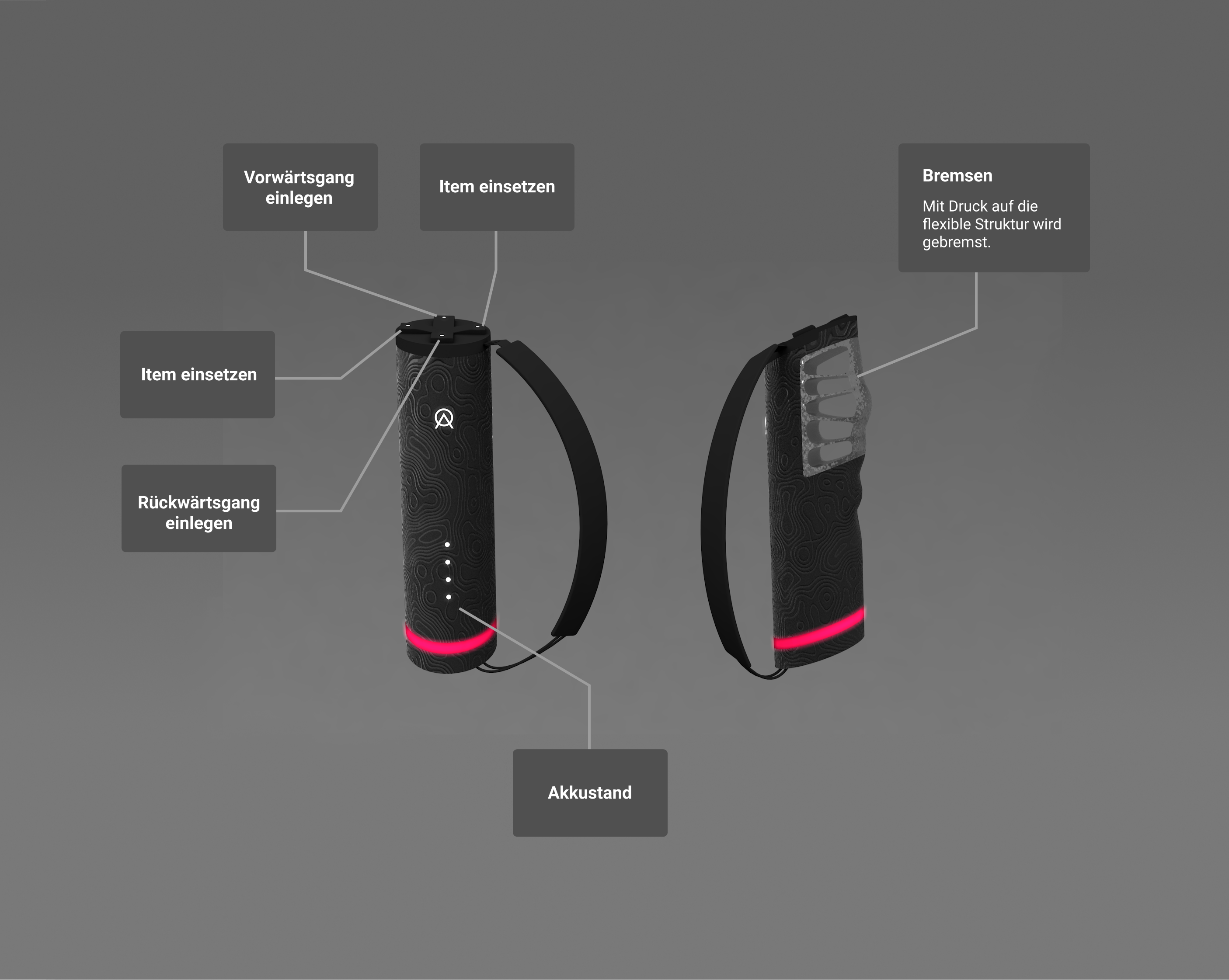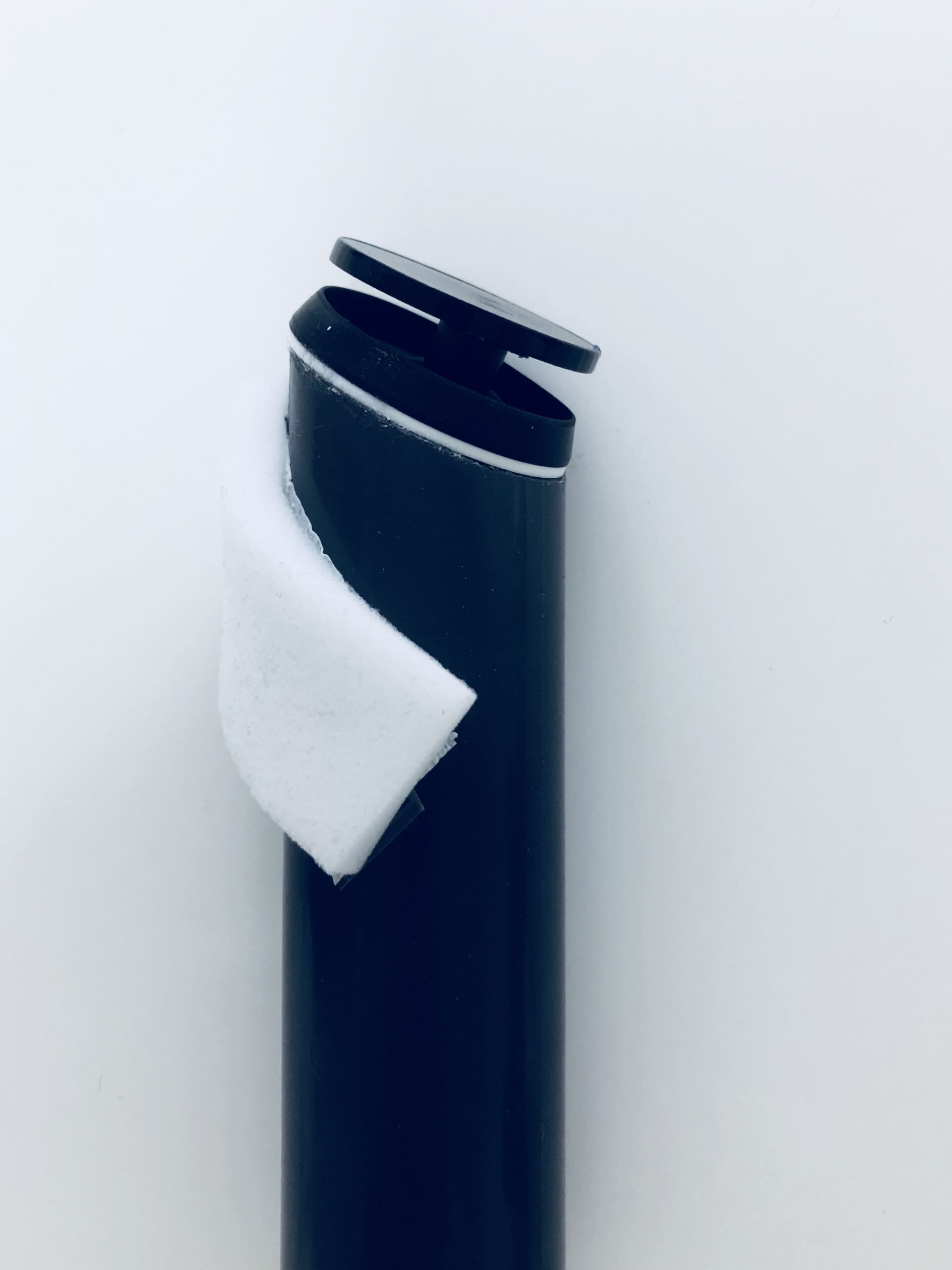more about this project
Who, when, what?
Summary
In the ‚Interface Design‘ and ‚Usability‘ course, we worked as a team to design and develop a controller for a computer racing game of our choice. The idea behind this came from thinking about what it would mean for the controls of a motor vehicle if, in the age of vehicle computers, they became detached from their operating habits. The current control elements have evolved from the need to be able to control the steering, accelerator and brake directly via a mechanical arrangement. Autonomous driving opens up a completely new dimension here, which leaves the question of how we will control such an autonomous vehicle in the future.
Duration
The project was created over a period of 8 weeks in the Interface Design l course in the 2nd semester at the Hochschule für Gestaltung Schwäbisch Gmünd.
Teammate
Gianluca Coronato
Methods
Research, Concept, Qualitative Interviews, Sketching, Prototyping, Interaction Design, 3D Modelling, Animation
Tools
Pen and Paper, Miro, Figma, Photoshop, Cinema 4D, After Effects, Arduino
Documentation
Final Product Trailer
The Goal
In our concept, we thought about how a controller could be designed into the scenario of an autonomous vehicle and that of a controller. The controller should be pleasant to use and at the same time intuitive. We decided quite early on to divide the controller into two halves in order to separate brake and accelerator. After a long iterative design process, and some user tests, we created a kind of rocker on the right Joy-Con, which is responsible for steering, and a D-Pad which can be equipped with additional functions. In an automotive context, the reverse gear was very important to us. Brake and gas find their place on the back of the respective Joy-Cons. Gas on the right and brake on the left. The mapping explains all indicators and functions below.
Functional Prototype
We used various components for the functional prototype, drawing on the results of our design process. To do this, we cut a plastic tube to a suitable length, in which the connections and cables were later hidden. This tube was then cut to our measured angle and the sharp edges were nicely hidden. Inside the tube is an XY dual-axis joystick breakout module, which reproduces the rocker function of our steering as well as a D-pad. The capacitive pressure sensor was placed on the back of each tube and covered with foam, so that the pressure is better distributed and the design concept of a flexible Voronois structure can be tested.
Design Prototype
In Cinema4D, we finally implemented our concept as a design prototype, creating several variants in the course of the process. We also created a mood board to get a feel for the shape, colors and materiality. It was important to us to show the controls clearly. In the end, we decided to define the rocker, which is responsible for left and right steering, more clearly and to adapt the G-Pad according to our own gaming experience. We gave the Joy- -Cons a grip texture that matched our branding and provided enough surface area to create grip. In the process, we created the topographic surface. We equipped the controls with reduced illuminated graphic elements and gave the Voronoi structure a taper towards the center. The choice of material was particularly important to us here, in order to clearly indicate that the controller body had a silicone-like coating and the brake and accelerator had a pressable gel structure.









